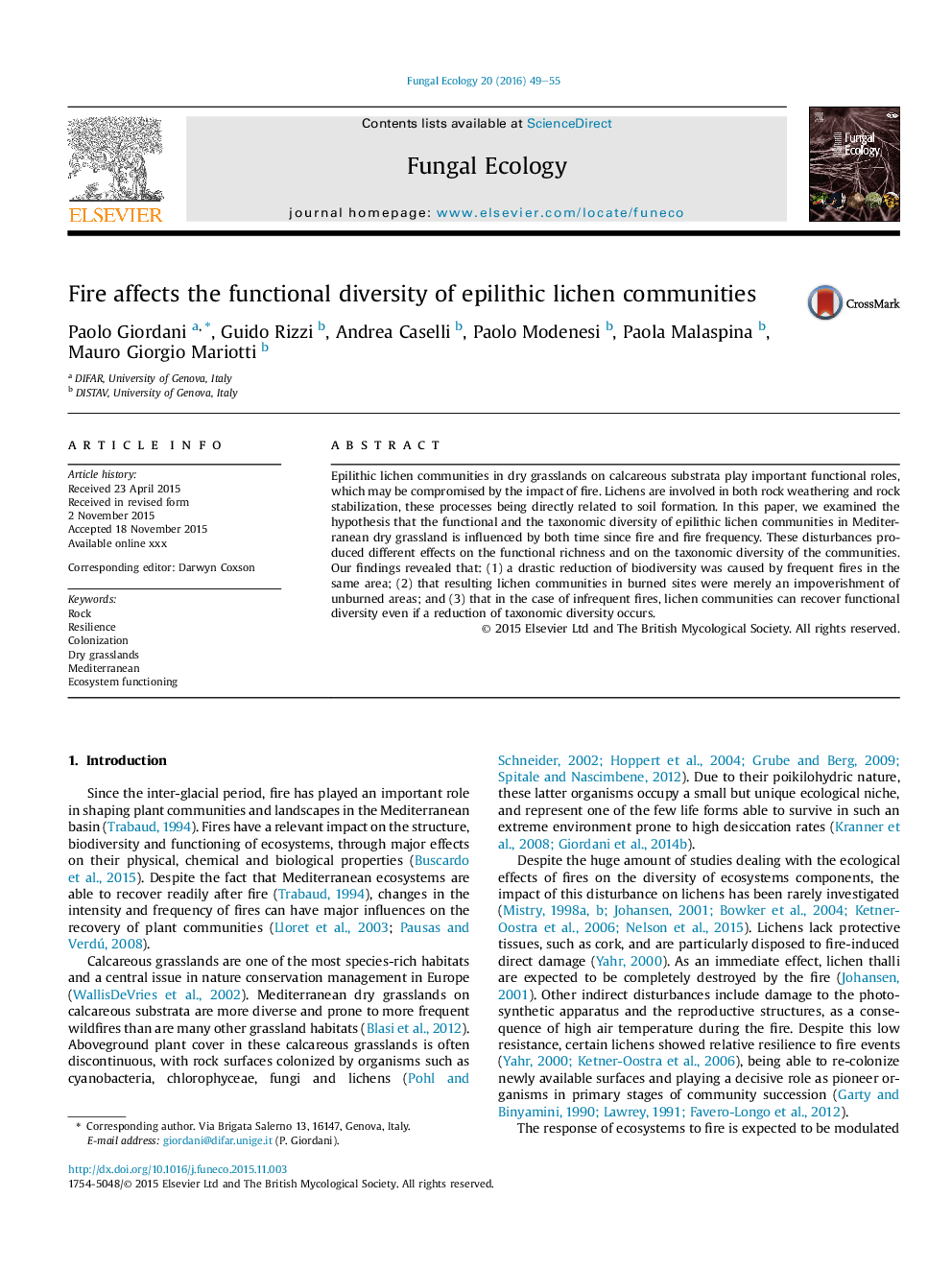| Article ID | Journal | Published Year | Pages | File Type |
|---|---|---|---|---|
| 8384448 | Fungal Ecology | 2016 | 7 Pages |
Abstract
Epilithic lichen communities in dry grasslands on calcareous substrata play important functional roles, which may be compromised by the impact of fire. Lichens are involved in both rock weathering and rock stabilization, these processes being directly related to soil formation. In this paper, we examined the hypothesis that the functional and the taxonomic diversity of epilithic lichen communities in Mediterranean dry grassland is influenced by both time since fire and fire frequency. These disturbances produced different effects on the functional richness and on the taxonomic diversity of the communities. Our findings revealed that: (1) a drastic reduction of biodiversity was caused by frequent fires in the same area; (2) that resulting lichen communities in burned sites were merely an impoverishment of unburned areas; and (3) that in the case of infrequent fires, lichen communities can recover functional diversity even if a reduction of taxonomic diversity occurs.
Related Topics
Life Sciences
Agricultural and Biological Sciences
Ecology, Evolution, Behavior and Systematics
Authors
Paolo Giordani, Guido Rizzi, Andrea Caselli, Paolo Modenesi, Paola Malaspina, Mauro Giorgio Mariotti,
